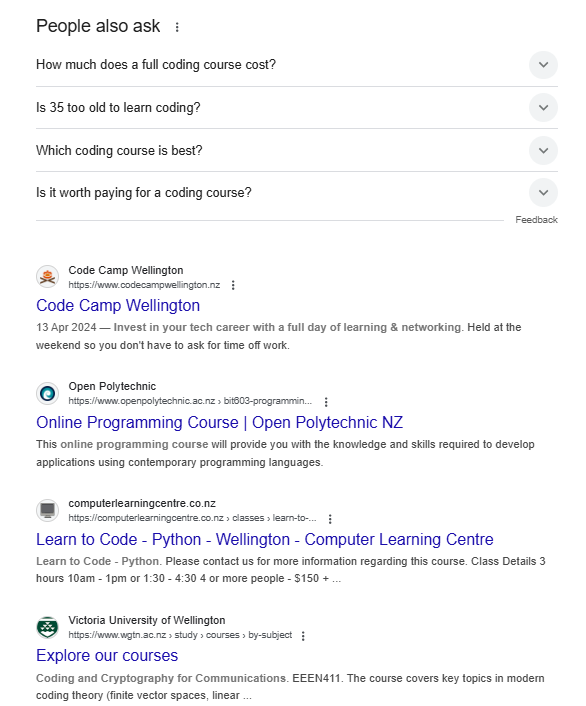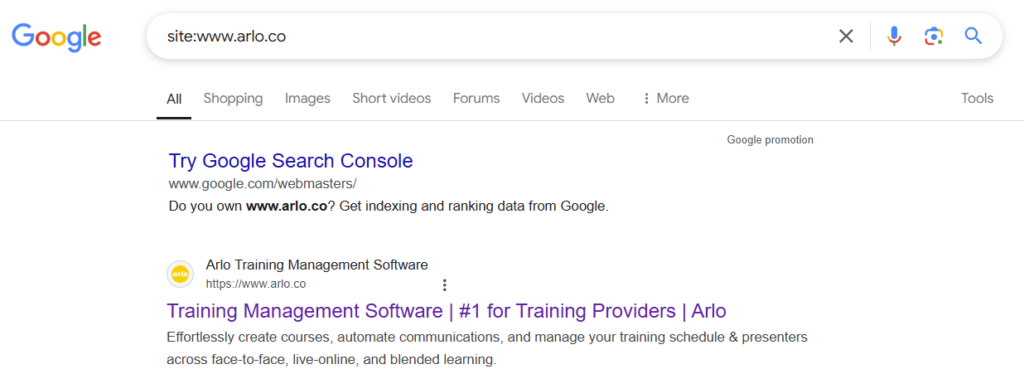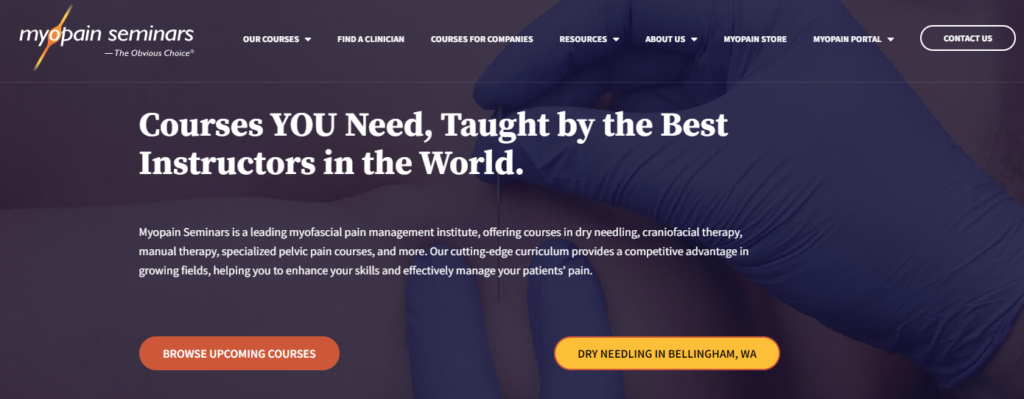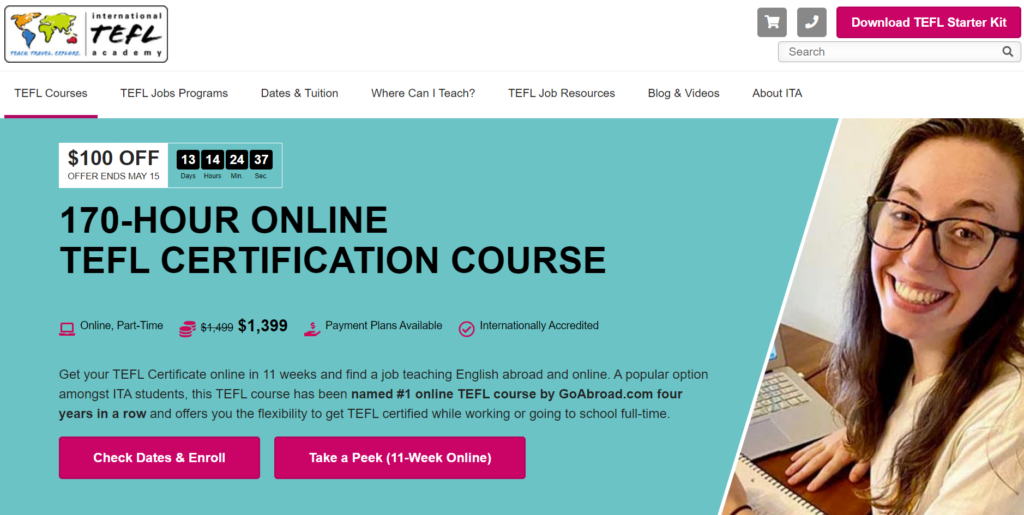The way we find information on the web is undergoing its most fundamental shift in the past 15 years.
Since the rollout of ChatGPT in late 2022, and its subsequent search features, more people are using large language models to find information, get product recommendations, and, in the case of training, find courses to enroll in.
While Google still makes up over 90% of the search marketplace, its market share has slowly started to decline, with a range of new AI search tools entering the market, such as ChatGPT, Perplexity, Google Gemini, and more.
It’s with all this change in mind, and our upcoming webinar with The Training Marketplace ‘How to Be Found Online and Sell More Courses’, that we’ve put together this insightful guide giving you some tips to show up in traditional Google search, their new AI overviews, and some additional tips on increasing your courses visibility on platforms such as marketplaces.
How Buyers Are Searching for Training Courses in 2025
The vast majority of your potential customers are still using Google to find their courses. But when you conduct a search on Google you may have noticed that for an increasing number of queries an AI generated response, known as an AI overview appears at the top of the results.
For example, if we conduct a search for coding courses in Wellington where Arlo’s HQ is located you can see an overview has appeared. This overview consists of a summary of where someone interested in a coding course can see the different places they can attend, and even their use case.
The traditional organic results are now further down the page.

How to Be Found in Traditional Google Search Results
There are lots of factors that can determine whether you show up on Google for a course search, but when you look at the top results when conducting a search for a course there a few things the top results do well, such as having a strong Google My Business Profile, relevant keywords on their pages and more.
Here are a few tips you can follow:
Make Sure Your Google My Business Profile Is Up-To-Date
The first step is to make sure your Google My Business profile is up to date. To show you how to do this, we’ll use the example of a fictional training company called ‘Epic Training’:
1. Claim and Verify the Profile
- Claim the Listing: Epic Training should visit Google My Business to claim and verify its profile.
- Verification: Complete the verification process via a postcard or other methods to ensure full control over the profile.
2. Update Business Information
- Accurate Details: Epic Training should ensure its business name, address, phone number, website, and business hours are correct and up-to-date.
3. Add High-Quality Photos
- Facility and Course Photos: Upload images of Epic Training‘s training environment, classes, and instructors. This builds trust and engagement by giving potential learners a look at the facilities and atmosphere.
4. Post Updates and Announcements
- Course Updates: Epic Training can use the “Posts” feature to share information about upcoming courses, discounts, and new offerings. For example: “Register for our Data Science Certification course—starting next month!”
5. Encourage and Respond to Reviews
- Ask for Reviews: Epic Training should encourage students to leave reviews, particularly after completing a course.
- Engage with Reviews: Respond to both positive and negative reviews to show responsiveness and care, which builds credibility.
6. Optimize for Keywords
- Business Description and Services: Epic Training should use relevant keywords in its business description and services, such as “Data Science Bootcamp,” “Project Management Certification,” and “Professional Development Training.”
Make Sure You’re Using the Correct Keywords on Your Course Pages
Targeting the right keyword for the course you are running is the next step to take. You need to make sure that your course page is optimized for a keyword a potential registrant would be searching for.
A clear example of a company that does this well is HubSpot. You can see below that they are ranking #1 for the keyword ‘YouTube Marketing Course’.
Of course. HubSpot are a huge brand so it may not be surprising that they rank #1. But they still do a great jon of ensuring their page is optimized for the right keyword.
Here are some things they do well that you can implement on your own pages:
Including the Keyword in Their Meta Title
HubSpot matches the keyword they are targeting ‘YouTube Marketing Course’ in the meta title of their page. This helps search engines understand what the page is about.
Incorporating the Keyword in Their Course Description
On the page itself, the course description is very clear which helps user experience, and the target keyword is naturally incorporated into the description without disrupting the readability of the text.
Utilizing Clear Header Tags for Structured Content, While Naturally Incorporating the Target Keyword
The heading structure of your pages should be organized hierarchically. HubSpot does this well by starting with a <H1> heading tag that tells the reader, and the search engine, what the page is about, and matches the meta title.
The secondary headings, likely <H2> tags, then break down the content of the page digestible sections, each focusing on different parts of the course.
You can find more tips on how to optimize your course pages, and website in our blog: SEO for training companies: 12 tips to get more traffic in 2025
Consider Google Paid Advertising
Similar to with an AI overview, when you search a term in Google you will see ‘Sponsored’ results at the top of the page. If you have the budget available you can use Google Advertising as another route for learners to discover your course.
The principles we laid out above still apply. You can see in the ‘Sponsored’ results that the pages still have terms related to ‘coding course’ in their title. Some other tips for paid advertising you can follow:
1. Target the Right Keywords
- Focus on specific, course-related keywords like “first aid training courses”
- Use negative keywords to filter out irrelevant traffic, such as “free courses” if your offerings are premium.
2. Create Compelling Ad Copy
- Highlight unique course benefits like “Industry-recognized certifications” or “Expert instructors.”
- Include strong CTAs such as “Sign up today” or “Start your journey now.”
3. Use Ad Extensions
- Add sitelink extensions to direct users to specific course pages or testimonials.
- Include call extensions for easy contact and location extensions if you have a physical location.
4. Optimize for Mobile
- Ensure your ads and landing pages are mobile-friendly, with concise ad copy and clear CTAs.
5. Track and Refine Campaigns
- Set up conversion tracking to monitor key actions like sign-ups or inquiries.
- Regularly test and adjust ads and landing pages based on performance data.
Increasing your visibility in AI search
After traditional Google Search results, and advertising this next set of tips will focus on how to improve your visibility in AI search.
However, before we dive in, it’s important to keep in mind that AI search is evolving quickly. While the tips we provide are relevant today, it’s essential to stay updated on the latest trends and developments to ensure you’re aware of emerging areas and opportunities in AI search.
Places like Search Engine Journal, or Search Engine Land are great places to keep an eye on for emerging trends and tips.
1. Ensure Your Webpages Are Crawlable and Indexable
For AI search engines to accurately analyze and rank your webpages, the first steps to make sure they must be easily crawlable and indexable.
You can check this easily by using a site command in Google site:yourwebsite.com, and if your web pages show up then you know your website is indexed.

Avoid Duplicate Content: Ensure there are no duplicate pages or content that could confuse search algorithms. Use canonical tags where necessary to direct AI crawlers to the preferred version of the page.
You can use tools like Grammarly to carry out plagiarism and duplicate content checks.
Clear Navigation and Links: Maintain a clean, intuitive website structure. AI search engines prefer easy navigation, so use a well-structured menu and internal linking strategy to help AI crawlers understand the relationship between your pages and improve indexing.
2. Optimize Content Structure for AI Overviews
AI search engines often prioritize summarizing key information to provide users with relevant insights in search results. These points are very similar to what we mentioned earlier in the more traditional SEO tips section:
Clear Headings and Subheadings: Use clear and descriptive headings (H1, H2, etc.) to break down your content into digestible sections.
Use Lists and Bullet Points: Organize information into lists or bullet points. AI systems are better able to parse structured content, and users often prefer quick, scannable overviews when searching for course details.
Rich Snippets and Schema Markup: Implement schema markup for your courses (e.g., Course schema) to provide AI search engines with structured data about your courses. This can enhance your visibility by showing rich snippets with details like course duration, ratings, and pricing directly in search results.
3. Follow SEO Best Practices in the Context of AI Search
While AI search is an emerging field, SEO best practices still play a crucial role in your overall visibility. Here’s how to apply traditional SEO to AI search:
Keyword Optimization: Research and optimize for keywords that are relevant to your courses. Use long-tail keywords that specifically describe your course content (e.g., “online digital marketing course for beginners”). This helps your content appear in AI-generated search results.
Mobile-Friendly Website: AI search engines often prioritize responsive and mobile-friendly websites, as a significant portion of search queries come from mobile devices. Ensure that your website provides a smooth, user-friendly experience across devices
4. Track Your Brand Mentions and Reviews
Brand’s mentions and reviews are essential for improving visibility and credibility in AI search. AI search tools seem to often pull comments from reviews, threads on reddit and other places into their results :
Monitor Online Mentions: Use tools to track mentions of your training courses or brand across social media, forums, and other websites. AI search engines use these mentions as signals of relevance and authority.
Engage with Reviews: Actively manage and respond to reviews, especially on educational platforms, course marketplaces, and review websites. Positive reviews boost your reputation, while addressing negative feedback can improve customer satisfaction and trust.
Leverage User-Generated Content: Encourage students to share their experiences and testimonials about your courses. This content can improve your visibility in AI search by showcasing real-world proof of your course quality.
Utilize Social Proof: AI search engines are increasingly incorporating social proof into search results. Encouraging satisfied students to post reviews and share content about your courses on social platforms can enhance your credibility and improve your chances of ranking well.
5. Ensure Your Business is Listed on Relevant Directories & Marketplaces
Getting your business listed on trusted, relevant online directories is essential for boosting your visibility in AI search. AI search tools pull data from these directories to display local and industry-specific results. Here’s how to leverage directories effectively:
Identify Relevant Directories: Look for directories and platforms specifically related to e-learning, training, or online courses.
Accurate and Consistent Information: Ensure that your business name, address, phone number, website, and course offerings are accurately listed across all directories. Inconsistent information can harm your credibility in AI search.
Engage with Directory Reviews: Encourage students to leave reviews on these directories. A strong set of positive reviews on trusted educational platforms can help improve your rankings and visibility in AI search results.
Leverage Specialized Platforms: Beyond general directories, look for niche directories or platforms that focus specifically on your area of expertise. For example, if you offer coding bootcamps, listing your courses on coding-specific directories or platforms can help target the right audience.
You can see an example below of an optimized company profile listed on The Training Marketplace, a leading marketplace for training providers to market their services.
If you can do all of the above you stand a good chance of your website appearing in the AI overview, either in the highlighted text, or as one of the listed options relevant to a buyers search query.
Making Sure Your Training Website Is Optimized for Conversions
After taking the steps to improve the visibility of your course website, you need to make sure you’re doing everything you can to convert visitors into paying customers when they land on your website.
In our experience of working with hundreds of training providers on their course websites, there are three main things high converting sites do well:
They Make It Easy for Visitors to Find the Courses They Are Looking For
When a buyer finds your website it should be easy for them to find the courses they are interested in, you can do this by having a strong call to action on your homepage that navigates visitors to your course pages.
Arlo customer Myopain Seminars has accomplished this on their homepage in the example below. As soon as a visitor lands on their homepage they can quickly click through to their course pages.

They Show Customers Why They Should Book With Them
A buyer is likely weighing multiple course options when considering making a booking. To stand the best possible chance of being the provider they choose, you must be able to articulate what sets your training business apart.
To do this, you should display testimonials from happy customers and reviews on your individual course pages. You can see an example of this below from Arlo customer Frank Capability. On their course pages, they have a “What others are saying” section that showcases customer quotes.

They Use Scarcity and Urgency to Encourage Course Sign-Ups
Sometimes customers need an extra ‘nudge’ to incentivize them to sign up for a course immediately. Two ways you can encourage this ‘nudge’ is by using scarcity and urgency.
A simple way to combine the two is to display how many places are remaining on a course. You can see an example of how Humentum have done this:

There are plenty of other ways you can use urgency and scarcity on your course pages, such as:
- Offering exclusive content for early sign-ups.
- Displaying a registration close date for a course.
- Offering limited-time discounts, such as an early bird offer that visitors can take advantage of.

The Final Word
There you have it – a guide packed full of tips you an use to show up in traditional Google search, Google’s new AI overviews, and on training marketplaces.
By implementing these strategies, you’ll be well positioned to capture demand, and make 2025 your top year yet for training registrations!
